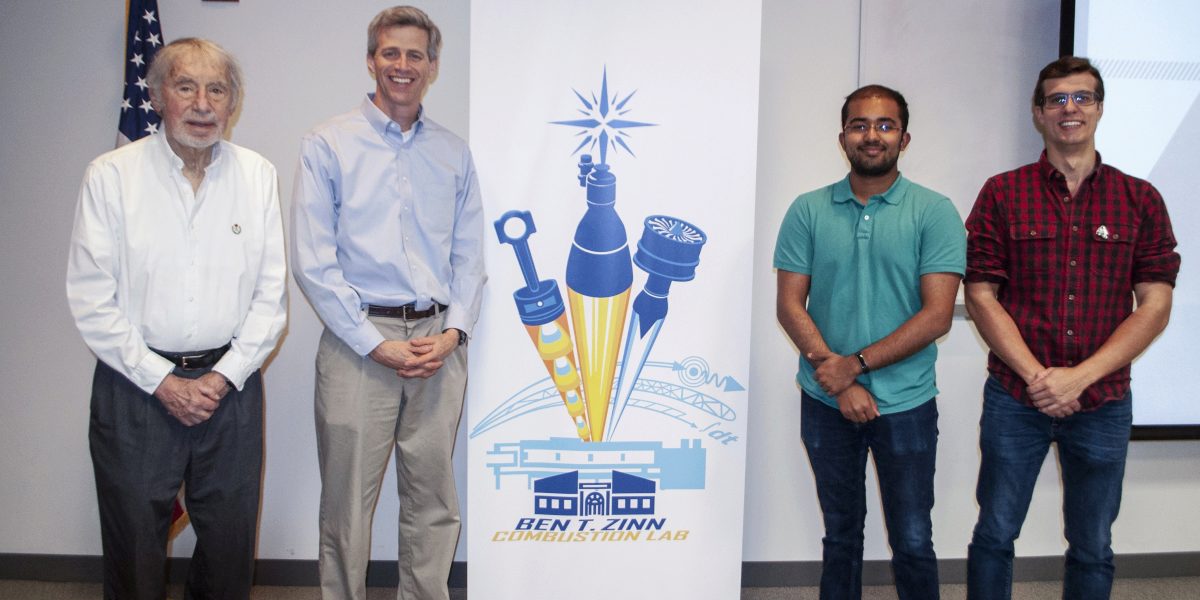 Launching NextGen Thinkers. Organizers of the 2019 Ben T. Zinn Symposium are, from left, Prof. Ben T. Zinn, Prof. Timothy Lieuwen, Raghul Manosh Kumar, and Dan Fries.
Launching NextGen Thinkers. Organizers of the 2019 Ben T. Zinn Symposium are, from left, Prof. Ben T. Zinn, Prof. Timothy Lieuwen, Raghul Manosh Kumar, and Dan Fries.
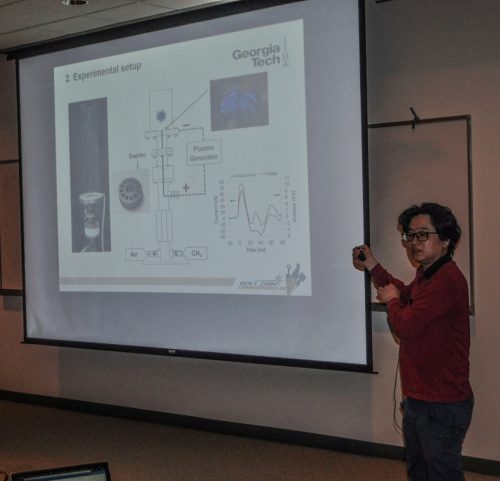 |
| Jinhoon Choe (above) was one of 10 presenters at the Ben T. Zinn Symposium, April 2. |
Ten of the Daniel Guggenheim School's most promising combustion engineers showcased their latest research April 2 at the Ben T. Zinn Combustion Symposium, held in the Food Processing Technology Building.
Named after Ben T. Zinn, an iconic AE professor emeritus and NAE member, the Symposium has become an annual celebration of rising talent in the field - and a huge impetus for future innovation, according to Prof. Timothy C. Lieuwen, who now heads up the Zinn Combustion Lab.
"The Combustion Lab is a special community. Our work is at the highest level in terms of generating new knowledge, which attracts very ambitious minds," he said. "But it’s also a great community where the students from all groups work together to help each other. I'm proud to be a part of the group and this event is another example of the community."
Organizing the Symposium were doctoral students Dan Fries and Raghul Manosh Kumar, both of whom work on a committee that's dedicated to improving the Zinn Lab's collaborative research efforts.
"We want to foster robust discussions by bringing together people who are working on different parts of the same problem," said Kumar. "It allows new perspectives to develop, and that pushes us all forward."
Fries echoed his colleague, adding:
"The Symposium is still small enough that our speakers are able to talk a little more about challenges they encounter -- not just the science. This particularly helps fresher graduate students, I think, because, early on, grad students can encounter a lot of obstacles that can seem overwhelming. The Symposium's speakers remind them of how other people have approached similar issues and overcome them. That is, the students are shown that research is not a straight line to success, but, rather, a convoluted path with a lot of issues that can look like dead-ends until you step back and think the issues through again or gain perspective from other researchers."
Here's a look at what the 2019 Symposium offered up:
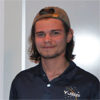 |
| Trenton Charlson |
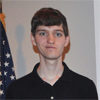 |
| Gerhardus Olde Loohuis |
"Student Development of the Kerolox Fueled Rocket Engine YJ-1S"
Presenters: Gerhardus Olde Loohuis and Trenton Charlson
(both undergraduates)
Louhuis and Charlson spoke about their work with the Yellow Jacket Space Program (YJSP) where they are developing the YJ-1S -- Georgia Tech’s first-ever student-designed/built liquid rocket engine. Currently in the manufacturing phase, this 3500 N thrust kerosene and oxygen system utilizes a pressure-feed system. The team is hard at work pushing towards a static fire test at the end of the Spring 2019 semester.
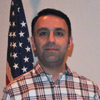 "Two-Wavelength Infrared Drop Sizing Diagnostic"
"Two-Wavelength Infrared Drop Sizing Diagnostic"
Presenter: Farzad Poursadegh (post-doc with Prof. Caroline Genzale)
Poursadegh presented his work on getting detailed quantitative measurements of liquids in diesel spray environments. His presentation focused on the development of a two-wavelength, line-of-sight extinction measurement to examine liquid volume fraction and the corresponding droplet field in high-pressure fuel sprays. To enable quantification of the liquid field in optically dense regions of the spray, the group developed a custom transfer function and applied the diagnostic to n-C12 sprays. The results were compared against available droplet sizes measured using USAXS, as well as from more recent measurements using a Scattering-Absorption Measurement Ratio (SAMR) technique also developed by Poursadegh's team. The group's findings highlight the accuracy of the developed diagnostic and its superiority over X-ray based spray measurements in terms of complexity and required resources. Moreover, the presented diagnostic shows an improved capability in the dilute regions of the spray, i.e. near the periphery, where X-ray based diagnostics are generally subject to high noise and low signal sensitivity.
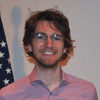 "Incorporating A Priori Lineshape Data into Bayesian Hyperspectral Absorption Tomography"
"Incorporating A Priori Lineshape Data into Bayesian Hyperspectral Absorption Tomography"
Presenter: Samuel Grauer (post-doc with Prof. Adam Steinberg) Grauer’s presentation focused on hyperspectral absorption tomography (HAT), a diagnostic that uses spectrally-resolved absorbance data from multiple laser beams to image physical parameters in a gas-phase process. HAT can simultaneously resolve the distribution of temperature, pressure, and chemical composition in the measurement plane and can diagnose local spectroscopic effects such as line mixing. The technique is used to observe phenomena in thermal plumes, shock tube boundary layers, and combustion fronts. Tomography is an ill-posed inverse problem and supplemental information is required to reconstruct the quantities of interest. Grauer described a Bayesian approach to HAT that incorporates information about the spatial variance of the target to obtain physically-plausible reconstructions. Furthermore, he introduced a lineshape prior that dramatically improved the accuracy of HAT spectra in the presence of noise (e.g., thermal noise, fringes, etc.). The prior can be employed for spectroscopic denoising, more broadly, in applications such as spectrally-resolved Raman scattering and wavelength-modulated PLIF
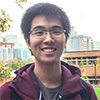 "Finite-Rate Entrainment Effects on Staged Combustor Nitrogen Oxide Emissions"
"Finite-Rate Entrainment Effects on Staged Combustor Nitrogen Oxide Emissions"
Presenter: Edwin Goh (PhD student with Prof. Jerry Seitzman
Goh talked about his work developing a reduced-order model that can be used in preliminary gas turbine combustor design to predict emissions. Using this model, he determined the theoretically achievable minimum emissions levels for staged combustors. In addition, under realistic flow conditions, the design of the combustor and its components had to incorporate the elimination of high-temperature regions.
"I showed one way to achieve this," said Goh. "You have to re-route air from the main burner into the secondary stage so that reactions occur at lower fuel-air ratios. This reduces the peak temperatures."
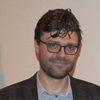 "Numerical Investigations of Phase-Separation During Multi-Component Mixing at Super-Critical Conditions"
"Numerical Investigations of Phase-Separation During Multi-Component Mixing at Super-Critical Conditions"
Presenter: Principio Tudisco (PhD student with Prof. Suresh Menon)
Tudisco spoke about the challenge of simulating high-pressure, high-temperature environments, which are often desirable in engineering applications to improve combustion efficiency and to maximize the potential for work being done by the machinery. In simulating corresponding environments, models struggle particularly in regions where high pressures persist and temperatures decrease as multi-species, multi-phase flows and large property gradients occur. To solve the resulting problems, both the numerical methods and the implementation of fluid physics have to be reexamined and improved. He presented research that implements a Double-Flux and Vapor-Liquid Equilibrium model which shows promising results in a turbulent mixing layer at relevant conditions.
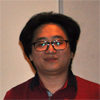 "Plasma Assisted Flame Stabilization in a Swirling Flow"
"Plasma Assisted Flame Stabilization in a Swirling Flow"
Presenter: Jinhoon Choe (PhD student with Prof. Wenting Sun)
Stable operation of very lean fuel mixtures is a design challenge in the quest for combustors with lower emissions and higher efficiencies. Choe spoke about his work using nanosecond-pulsed plasma discharges to characterize and extend the limits of lean-blowoff, i.e. the point at which a flame cannot exist anymore due to strain and lack of fuel, as well as to provide an active means of control for the burning mode and location of the flame. He observed that, under certain operating conditions, the utilization of plasma discharges leads to a decrease in CO emissions (indicating higher burning efficiency) but also an increase in NOx, the latter being considered a pollutant.
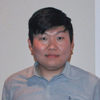 "Supercritical CO2 Advanced Energy Conversion
"Supercritical CO2 Advanced Energy Conversion
Presenter: Taegyu Kang (PhD student with Devesh Ranjan)
Kang's research looks at supercritical CO2 (sCO2) power cycles that promise higher efficiencies and reduced equipment size compared with currently prevalent steam cycles. Due to the high operating temperatures and pressures (>600°C, >15 MPa) as well as the importance of heat recuperation in these cycles, heat exchanger performance is critical. He pointed out that limits in both the acceptable cost and the current technology require new concepts to satisfy requirements for widespread implementation of sCO2 cycles. Kang's research identified promising concepts: specific surface flow patterns, high-tech nickel alloys, and metal-ceramic composites. He cautioned that each of these solutions comes with its own challenges, however, prompting his own work on corrosion mitigation, manufacturing, and lifetime issues.
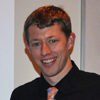 "Hydrodynamics of Reacting Swirling Flows"
"Hydrodynamics of Reacting Swirling Flows"
Presenter: Christopher Douglas (PhD student with Prof. Tim Lieuwen)
Douglas described his efforts to deconstruct the convoluted physics of laminar and turbulent reacting swirling flows through a unified, reduced-order, deterministic approach. He pointed out that the enhanced mixing and flame stability characteristics offered by strongly-swirling jet burner configurations has directly contributed to the increased thermal efficiencies and drastically-reduced emissions seen in modern combustion systems. However, an incomplete physical understanding of these flows continues to press the combustion industry against the limits of reliable performance.
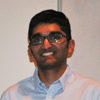 "Subfilter Scale Modeling for Large Eddy Simulation of Supercritical Turbulent Combustion"
"Subfilter Scale Modeling for Large Eddy Simulation of Supercritical Turbulent Combustion"
Presenter: Umesh Unnikrishnan (PhD student with Prof. Vigor Yang and Prof. Joe Oefelein)
Unnikrishnan spoke about his work performing direct numerical simulation to provide a detailed understanding of turbulence and turbulence-chemistry interactions in a highly turbulent liquid rocket fuel injector at supercritical pressures. Using the data from these high-fidelity simulations, he explored the validity of the large eddy simulation (LES) framework for application to turbulent combustion and development of advanced sub-models that represent the fundamental physical process with greater accuracy.
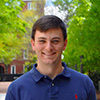 "Microcracks in Hall Thrusters"
"Microcracks in Hall Thrusters"
Presenter: Nathan Brown (PhD student with Prof. Mitchell Walker)
Plasma erosion of the borosil discharge chamber wall is the ultimate life-limiting mechanism in Hall thrusters. In his talk, Brown noted that the erosion of borosil is poorly understood and contemporary models are unable to explain many observed features. His work investigated one such feature, microcracking, and provided preliminary results on its cause and influence in the plasma erosion process.